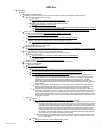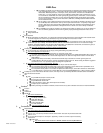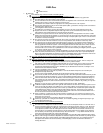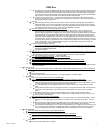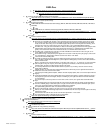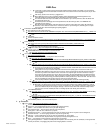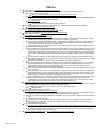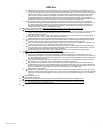
DRD-Pers
1. Cabinet table saws are heavy (using large amounts of cast iron and steel) to minimize vibration and increase accuracy. A
cabinet saw is characterized by having a closed (cabinet) base. Cabinet saws usually have electric induction motors in the 3
to 5 hp (2 to 4 kW) range. For home use, this type of motor typically requires that a heavy circuit be installed (in the US, this
requires a 220V outlet). The motor is enclosed within the cabinet and drives the blade with three parallel v-belts. Cabinet
saws are heavier and offer the following advantages over contractor saws: heavier construction for lower vibration and
increased durability; a cabinet-mounted trunnion (the mechanism that incorporates the sawblade mount and allows for
height and tilt adjustment); improved dust collection due to the totally enclosed cabinet and common incorporation of a dust
collection port. In general, cabinet-mounted trunnions are easier to adjust than table-mounted trunnions.
2. Keep the blade guard in place whenever possible. If you do not like the guard that came with the saw, it is possible to
purchase aftermarket guards of various configurations. Note that one of the main functions of a typical blade guard is to act
as a splitter, which helps prevent the cut in the wood from closing and pinching the back of the blade and kicking back.
Sometimes the blade guard is more of a danger than a safety feature, most commonly during smaller cuts (less than 3
inches), and cuts with a push stick, and should be removed.
13. Keeping a table saw from rusting: http://www.woodworking.com/article_archive.cfm?section=1&article=193
14. http://www.thisoldhouse.com/toh/knowhow/tools/article/0,16417,783876-2,00.html
1. Most saws come standard with a general-purpose 10-inch carbide-tipped blade, which can crosscut a 4x4. Replacing it with
a better, 40-tooth combination blade (about $60) dramatically improves the quality of cuts. Specialty blades handle
particleboard and other materials.
2. Most saws come with a rear bar, which helps support the workpiece as it exits, but you should still rig up outfeed support —
a stand, sawhorses, or a table — that's ¼ inch lower than the saw itself.
3. Position yourself to one side of the blade. Never stand directly in line with the blade or you risk getting injured by kickback.
4. Start the machine and use your right hand to press the workpiece down on the table and against the fence. Brace your left
hand on the table and use it as a guide while you propel the piece smoothly forward with your right hand.
5. As the tail of the board approaches the blade guard, you might need to use a push stick to complete the cut. When the cut
is done, shut off the saw so you can reach safely over the blade to remove the wood.
6. One easy way to improve a saw's performance and protect it from corrosion is to coat the table surface. Rub regular paste
wax into the table, or try a proprietary machine-table lubricant such as Slipit. Avoid anything containing silicone, which will
contaminate the wood you're cutting and interfere with most finishes.
7. [Crosscutting] Move the rip fence away from the workpiece. Never use the rip fence and the miter gauge together.
15. http://home.att.net/~waterfront-woods/Articles/Tablesaw/tablesaw.htm
1. Good article on table saw safety, especially details about kickback and how to avoid it.
2. More and more woodworkers are only buying combination blades for their table saws, even when they have the funds
available to buy other blades. The salesmen have told them that the combination blade is a catch-all, do-all, tool. This is not
true. Combination blades were developed for the shops which can only afford a single blade. For best results, a shop should
have blades dedicated to each task
3. Never let go of the workpiece! No matter how rough it gets, or how probable a kick-back will be, do not let go of the wood.
More often than not, by holding fast, you will actually prevent the kickback in the first place.
4. Using a blade that is too coarse on veneers and laminates will cause undue chipping. Using a blade which is too fine for
ripping solid lumber can burn the wood, damage the blade, put undue wear on the motor, and even cause the wood to ride
up over the top of the blade and cause a kickback. While I understand that many woodworkers cannot afford more than one
blade, I am nonetheless a strong proponent of using the correct blade when you can afford to do so.
5. [Good advice on various blades]
6. Starting with the power of the machine, you don't want to take a feed rate which excessively loads the motor, but you also
don't want a feed rate which builds up too much heat. I have seen too many woodworkers rip lumber at such slow feed rates
that they burn the wood and foul the blade. If you're burning your wood, you are probably moving too slow, or your blade is
very dull.
16. DONE google cabinet saw
17. DONE google best table saw
18. http://www.woodmagazine.com/wood/story.jhtml?storyid=/templatedata/wood/story/data/1164985031812.xml
19. Tool Review - Mid-Priced Tablesaws:
http://www.woodmagazine.com/wood/story.jhtml?storyid=/templatedata/wood/story/data/1164985031812.xml
1. [This review is available for download for 4.95.]
20.
8Printed 18:10 3/31/07



